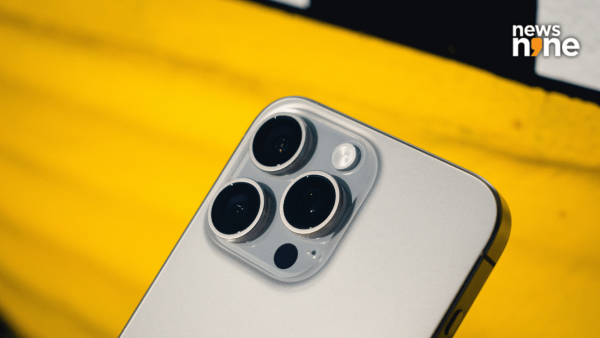
New Delhi: Apple might be about to make a big leap in mobile imaging. A new patent indicates the company is developing a new advanced image sensor technology that could provide up to 20 stops of dynamic range – matching the high-end cinema cameras such as the ARRI Alexa 35 and nearing that of the human eye.
The patent, titled ‘Image Sensor With Stacked Pixels Having High Dynamic Range And Low Noise’, describes a stacked sensor with a contrast ratio of 1,048,576:1 without highlight and shadow detail loss. Reported by Y.M. Cinema Magazine, the innovation can indicate that Apple is going pro-grade, creating camera systems on a ground-up basis, instead of using image sensors provided by Sony.
The latest iPhone, such as the iPhone 15 Pro Max, has a maximum dynamic range of about 12 to 13 stops, according to CineD and IMATEST measurements. By comparison, pro cinema cameras such as the ARRI Alexa 35 have 17 stops of detail-rich images in highlights and shadows. Even that would be surpassed by the 20-stop sensor that is proposed by Apple, which would give unparalleled control over highlights, middle tones and shadows.
Dynamic range is important to photography and videography, particularly in high-contrast scenes where the bright sky and the dark shadows should be detailed. The new sensor might not require any intense software HDR correction but support scenes more accurately in a natural way.
The patent indicates that it has a two-layer structure: a sensor die to capture the light and a logic die to process the light. The design of Apple incorporates LOFIC (Lateral Overflow Integration Capacitor) to hold light at various intensities pixel-at-a-time and a current memory circuit to cancel the thermal noise in real time. This is a great improvement on the existing sensors, which mostly use noise reduction after an image is taken.
Interestingly, Apple is deploying a 3-transistor (3T) structure per pixel, a design which will be less complex than the 4T structure used in most pro sensors, though it does not compromise on the quality.
This tech has the potential to revolutionise mobile photography and videography should it be implemented. Ultra-thin devices and pro-grade output, zero-noise low-light capture and cinematic HDR video might be the new standard. It also leaves the possibility of Apple itself creating its own small camera systems to use on AR/VR devices or even on its own pro camera.
This could be pushed by Apple with its Neural Engine and deep hardware-software integration, which may allow real-time optimisation of images and allow the future of computational photography that goes beyond current capabilities.
Like any patent, this might never reach a shipping product. Apple constantly looks into new technologies that remain on the drawing board. And numerous technical problems still need to be solved, some of which have actually sent camera experts and engineers online to raise their eyebrows.
Nevertheless, should Apple succeed in bringing this sensor to reality, perhaps in the iPhone 17 Pro or Apple Vision Pro 2, it may create a discontinuity in digital imaging, potentially altering not just mobile photography but also how professional filmmakers shoot and edit on small form factor devices.